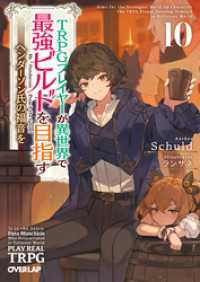Description
A generation or two before Socrates, thinkers classified the world's organisms into three categories: plants, animals, and man. However, Aristotle recognized that some organisms, such as sponges and sea-fans, share properties of both plants and animals. These became known as zoophytes. Since then, scientists have explored the idea of a "third kingdom." In Kingdoms, Empires, and Domains, leading molecular systematist Mark A. Ragan offers a history of the idea that there is more to the living world than plants and animals.Progressing chronologically through philosophical, religious, literary, and other pre-scientific traditions, Ragan traces how transgressive creatures such as sponges, corals, algae, fungi, and diverse microscopic beings have been described, categorized, and understood throughout history. The book considers their appearance in early Christian, Islamic, and Jewish traditions; myths, legends, and traveller's tales; occult literature; and more. Kingdoms, Empires, and Domains also details how the concept of a "third kingdom" has evolved throughout the history of scientific botany and zoology, and continues to evolve up to the present day.Kingdoms, Empires, and Domains features original translations of passages from key historical texts, many of which have never appeared in English before. It also draws on the most recent and reliable scientific literature. A sweeping, interdisciplinary study, Kingdoms, Empires, and Domains is essential reading for students and scholars of the history of biological classification and anyone interested in the history of ideas about the natural world.
Table of Contents
List of IllustrationsPrefaceAcknowledgement: copyrighted materialChapter 1. The Earliest NaturePrimitive concepts of natural entitiesEarly figurative artSymbolic language and folk taxonomiesCreation mythsAnimal deities and anthropomorphized plantsTransformation and metamorphosisMetempsychosis, reincarnation, and anamnesisTransmutation and transubstantiationChapter 2. Eastern NatureThe Indian subcontinentBuddhismChina: the common traditionChina: ConfucianismChina: TaoismChina: MohismJapanThe "three kingdoms of nature" are not rooted in prehistoryChapter 3. Philosophical NatureHellenic philosophical traditions before SocratesThe PythagoreansThe EleaticsThe atomistsEmpedoclesDiogenes of ApolloniaSocratesPlatoAristotleTheophrastusStoic and later triadic divisions of soul or beingsScepticismEnvoiChapter 4. Utilitarian NatureLucretiusSenecaPliny the ElderHerbals and pharmacopoeiasEarly medical textsBestiariesSummaryChapter 5. Neoplatonic NaturePhilo of AlexandriaCalvenus TaurusPlotinusPorphyry and AnatoliusIamblichus and DexippusThemistiusAthens and AlexandriaAmmonius Hermiæ and John PhiloponusElias and DavidSummary: philosophical themes within NeoplatonismChapter 6. Christian NatureEarly theologians and polemicistsOrigenNemesiusThe Cappadocian FathersAugustinePseudo-DionysiusBoëthiusJohn of DamascusSummaryChapter 7. Islamic and Jewish NatureIslam and the translation of Hellenic philosophy into ArabicArabic natural history, an-Na.z.z=am, and al-J=a.hi.zAl-Kind=i, al-F=ar=ab=i, and al-Mas),ūd=iThe Ikhw=an al-.Saf=aAl-B=irūn=i, Ibn S=in=a, al-Ghaz=al=i, Ibn Rushd, and al-Abhar=iNi.zam=i Arūz=i, al-Qazwini, and later authors.SufiyyaThe Jewish philosophical tradition: Ibn Daud and MaimonidesKabbalahDuran, Alemanno, and AlbotiniThe rediscovery of Aristotle's natural historyChapter 8. Monastic and Scholastic NatureCassiodorus to Hrabanus MaurusEriugenaAnselm, Peter Abelard, and Peter LombardAdelard and BerachyaHildegard and MariusThe School of ChartresBernard Silvestris and John BlundRobert GrossetesteThomas of Cantimpré, Bartholomæus Anglicus, and Vincent of BeauvaisAlbertus Magnus and Thomas AquinasBonaventure and DanteThe Fourteenth centuryNicholas of CusaFrom scholasticism to humanismChapter 9. Nature's Mystic BookOracles and mysteriesThrice-great HermesUniversal truths and hidden meaningsGnostic textsMacrocosm and microcosmAlchemyThe Kit=ab Sirr al-khal=iqaThe Sirr al-asrar or Secretum secretorumMagicFrom J=abir to the RenaissanceThree Renaissance humanists: Ficino, Pico, and AgrippaParacelsus and the alchemistsBruno, Fludd, and the nature-mysticsSummary and questionsChapter 10. Allegory, Myth, and SuperstitionAllegoryBeings with exaggerated featuresChimæras: the borametzActive transformation: the barnacle-goose-treeReturn from the deadMonsters and marvelsAncients and ModernsChapter 11. The Return of the ZoophytesDictionariesGuillaume Budé: Roman law (1508)Otto Brunfels: materia medica (1534)François Rabelais: literature in the vernacular (1546)Jean Bodin: political theory (1576)Jacopo Zabarella: Aristotelian logic (1606)Johann Thomas Freig: Ramist natural history (1579)Robert Burton: English vernacular (1621)Juan Eusebio Nieremberg: baroque nature (1635)David Person: rare and excellent matters (1635)Henry More: the Spirit of Nature (1682)Concluding commentsChapter 12. Plants and AnimalsHerbals (from 1475)The rise of scientific botany 1: 1490-1580Andrea CesalpinoThe rise of scientific botany 2: 1580-1680Medieval and early Renaissance animal booksThe rise of scientific zoology 1: 1520-1550The rise of scientific zoology 2: the momentous 1550sThe rise of scientific zoology 3: the encyclopædists 1560-1660The rise of scientific zoology 4: curiosities and specializationZoophyta: a fourth division of nature?Plants and animals in 1680Chapter 13. The Most Wretched CreaturesMultiple worldsInvisible airborne seedsLeibniz and monadsLeeuwenhoek and Joblot: little animals observedBuffon, Needham, and Spallanzani: spontaneous generationA class of their own?Summary: one hundred years of little animalsChapter 14. Continuity in the Living WorldThe Great Chain under attackRichard Bradley: A philosophical accountCorals: an ancient enigma resolvedHydra: a new enigmaCharles Bonnet: the canonical Great Chain of BeingThe Great Chain after 1780Chapter 15. Classifying God's HandiworkMagnol and TournefortRay and natural theologyLinnæusWhat, then, are fungi?Adanson, Scopoli, and de JussieuZoophyta as animalsSummaryChapter 16. Beyond the End of the ChainNature as a mapNature as a networkNature as a polygon or Easter eggNature as a branched treeNature as a spiralNature as a circleQuinarian natureSummaryChapter 17. From Histoire Naturelle to Anatomie and MorphologieDenis Diderot and Jean Le Rond d'AlembertLouis-Jean-Marie DaubentonJean-Baptiste LamarckGeorges CuvierÉtienne Geoffroy Saint-HilaireFélix Vicq-d'Azyr: le règne vivantJean Guillaume Bruguière: a new arrangement of VermesJulien-Joseph Virey: evolution along parallel chainsPierre-Jean-François Turpin: végéto-animauxHenri Marie Ducrotay de Blainville: infusoria as an appendageHenri Milne-Edwards: embryology and classificationJean-Baptiste Bory de Saint-Vincent: Règne PsychodiaireSummary: FranceChapter 18. Naturphilosophie, Polygastric Animalcules, and CellsJohann Gottfried HerderJohann Wolfgang von GoetheImmanuel Kant: transcendental idealismGerman RomanticismNaturphilosophieLorenz OkenGottfried Reinhold TreviranusAlexander von HumboldtKarl Ernst von BaerChristian Gottfried EhrenbergCell theoryThe last Naturphilosoph: Carl Gustav CarusSummary: GermanyChapter 19: Green Matter, Zoospores, and DiatomsSimple animals, simple plantsHow, then, do algae reproduce?Case study 1: Priestley's green matterCase study 2: zoosporesCase study 3: metamorphosisBenjamin GaillonFriedrich Traugott KützingCase study 4: diatoms and desmidsSummaryChapter 20: Temples of NatureBritain: three Linnæan kingdomsErasmus DarwinNatural theologyRichard OwenVestiges of the natural history of CreationCharles DarwinJohn HoggThomas B. Wilson and John CassinPopular natural histories in Victorian BritainSummary: BritainChapter 21: Ernst Haeckel and ProtistaDie Radiolarien (1862)Generelle Morphologie (1866)New classes of ProtistaSponges and gastraea theoryMonera, protozoa, and protophytaDas Protistenreich (1878)Protists and HistonesFour kingdoms of lifeThe protozoological traditionThe phycological traditionThe bacteriological traditionThe protistological traditionSummary: Haeckel and ProtistaChapter 22: Beyond Three KingdomsKingdoms and superkingdomsFour kingdoms (Copeland, 1938-1956)Five kingdoms (Whittaker, 1969)Other high-level proposals to 1975The rise of cellular ultrastructureEukaryogenesis 1: Natura facit saltumEukaryogenesis 2: science may discover tenSummaryChapter 23: Genes, Genomes, and DomainsIntroduction: the molecular basis of heredityMolecular phylogenetics before sequencesThe ribosomal RNA Tree of LifeThe molecular consensus erodesThinking laterally about genomesGenomes and pan-genomesGenomes from the environmentRetrospective: the domains of lifeLast words on kingdoms, empires, and domainsAppendix: Victorian popular natural historiesAcronymsNotesReferencesIndex of namesIndex of subjects
-

- 電子書籍
- アニメディア2025年4月号
-

- 電子書籍
- かくりよの宿飯 あやかしお宿に嫁入りし…
-

- 電子書籍
- TRPGプレイヤーが異世界で最強ビルド…
-

- 電子書籍
- 別冊マーガレット 2021年1月号
-

- 電子書籍
- 今いる場所で幸せになれる女の心のもち方



